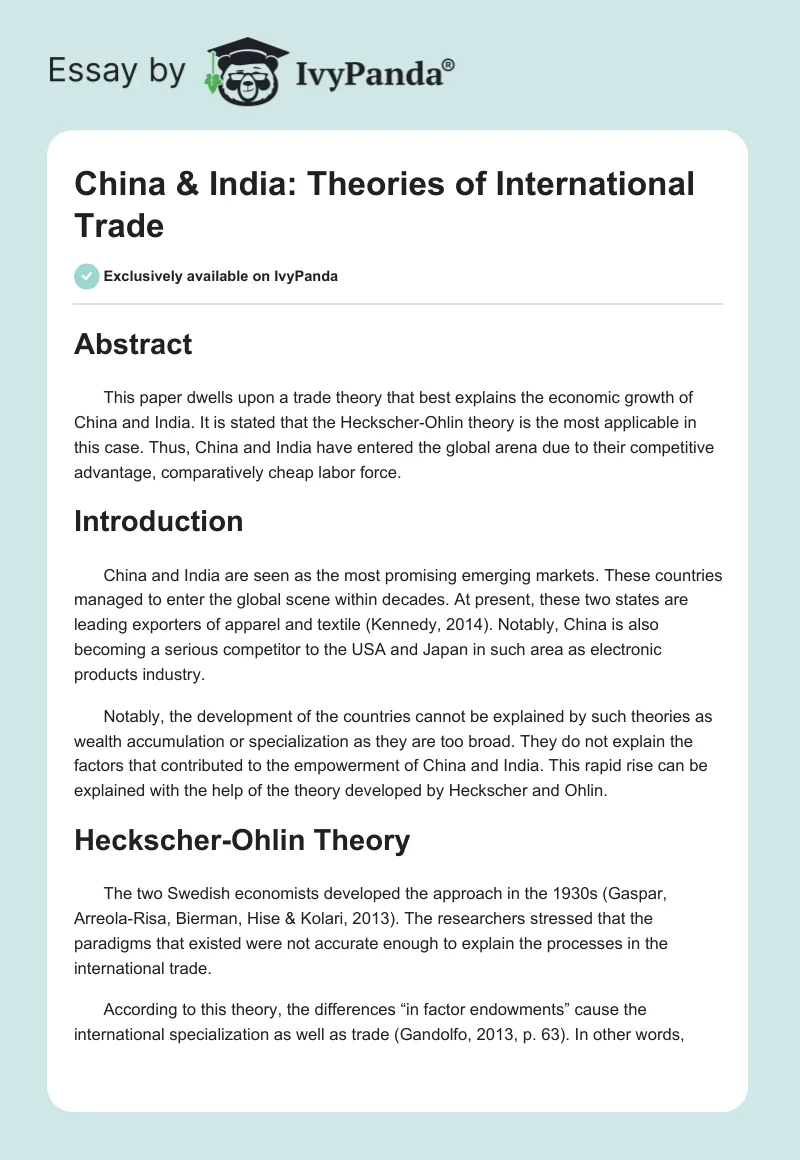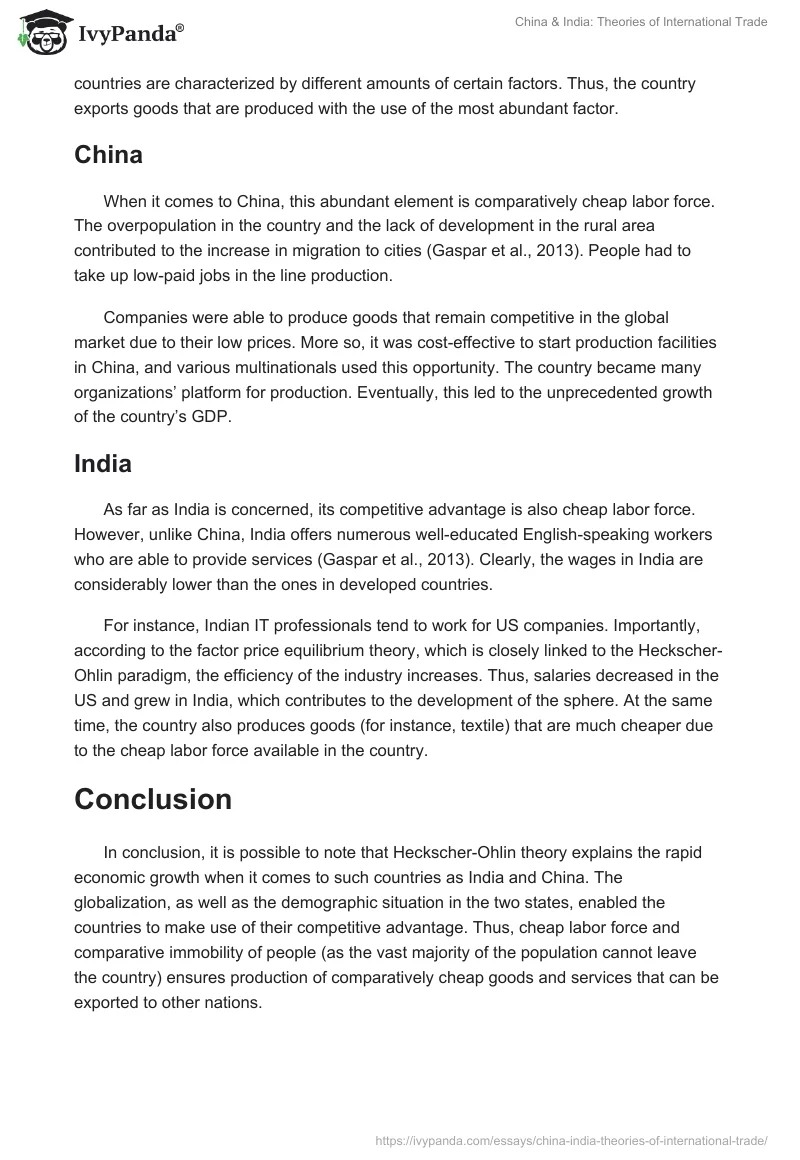Abstract
This paper dwells upon a trade theory that best explains the economic growth of China and India. It is stated that the Heckscher-Ohlin theory is the most applicable in this case. Thus, China and India have entered the global arena due to their competitive advantage, comparatively cheap labor force.
Introduction
China and India are seen as the most promising emerging markets. These countries managed to enter the global scene within decades. At present, these two states are leading exporters of apparel and textile (Kennedy, 2014). Notably, China is also becoming a serious competitor to the USA and Japan in such area as electronic products industry.
Notably, the development of the countries cannot be explained by such theories as wealth accumulation or specialization as they are too broad. They do not explain the factors that contributed to the empowerment of China and India. This rapid rise can be explained with the help of the theory developed by Heckscher and Ohlin.
Heckscher-Ohlin Theory
The two Swedish economists developed the approach in the 1930s (Gaspar, Arreola-Risa, Bierman, Hise & Kolari, 2013). The researchers stressed that the paradigms that existed were not accurate enough to explain the processes in the international trade.
According to this theory, the differences “in factor endowments” cause the international specialization as well as trade (Gandolfo, 2013, p. 63). In other words, countries are characterized by different amounts of certain factors. Thus, the country exports goods that are produced with the use of the most abundant factor.
China
When it comes to China, this abundant element is comparatively cheap labor force. The overpopulation in the country and the lack of development in the rural area contributed to the increase in migration to cities (Gaspar et al., 2013). People had to take up low-paid jobs in the line production.
Companies were able to produce goods that remain competitive in the global market due to their low prices. More so, it was cost-effective to start production facilities in China, and various multinationals used this opportunity. The country became many organizations’ platform for production. Eventually, this led to the unprecedented growth of the country’s GDP.
India
As far as India is concerned, its competitive advantage is also cheap labor force. However, unlike China, India offers numerous well-educated English-speaking workers who are able to provide services (Gaspar et al., 2013). Clearly, the wages in India are considerably lower than the ones in developed countries.
For instance, Indian IT professionals tend to work for US companies. Importantly, according to the factor price equilibrium theory, which is closely linked to the Heckscher-Ohlin paradigm, the efficiency of the industry increases. Thus, salaries decreased in the US and grew in India, which contributes to the development of the sphere. At the same time, the country also produces goods (for instance, textile) that are much cheaper due to the cheap labor force available in the country.
Conclusion
In conclusion, it is possible to note that Heckscher-Ohlin theory explains the rapid economic growth when it comes to such countries as India and China. The globalization, as well as the demographic situation in the two states, enabled the countries to make use of their competitive advantage. Thus, cheap labor force and comparative immobility of people (as the vast majority of the population cannot leave the country) ensures production of comparatively cheap goods and services that can be exported to other nations.
Reference List
Gaspar, J., Arreola-Risa, A., Bierman, L., Hise, R., & Kolari, J. (2013). Introduction to global business: Understanding the international environment & global business functions. Mason, OH: Cengage Learning.
Gandolfo, G. (2013). International trade theory and practice. New York, NY: Springer Science & Business Media.
Kennedy, M.M.J. (2014). International economics. New Delhi, India: PHI Learning Pvt. Ltd.


